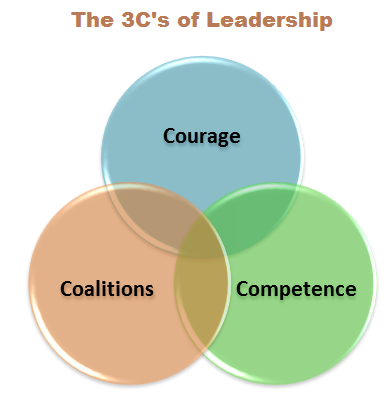5 Trends That Will Impact Diversity & Inclusion Work
Last week, I co-presented a webinar about the 2015 Diversity Leadership Retreat. I discussed “5 Trends That Will Impact Diversity & Inclusion Work.” A summation of my presentation follows.
Within the scope of diversity and inclusion work, it is important for organizations to proactively:
- Understand Diversity & Inclusion from a Global Context
There is a “Make in India” pitch, a “Made in China” campaign, a “Made in America” movement, and so many other promotions to persuade manufacturers and consumers to invest their monies. Beyond short term job creation and tax revenue benefits, these campaigns point to a long-term strategy for global dominance.Sustainable revenue growth is one of the drivers behind the need to do business better in international markets, as well as the impetus to appeal to diverse employees and consumers in distinct regions. Nevertheless, in these global markets, diversity issues will manifest in different forms. For example, in some places, religion, age and income are issues; in other places, the biggest diversity “problems” center around emigrants and women, or the LGBT and disabled communities.
In Forbes, Glenn Llopis writes, “No longer can America’s corporations hide behind their lack of cultural intelligence. Organizations that seek global market relevancy must embrace diversity – in how they think, act and innovate. Diversity can no longer just be about making the numbers, but rather how an organization treats its people authentically down to the roots of its business model. In today’s new workplace, diversity management is a time-sensitive business imperative.”
Thus, instead of viewing diversity as a problem, the challenge lies in seeing opportunities that exist when embracing under-served and under-utilized markets.
- Realize the Need to Offset Impending Labor & Economic Shortages with Women
“A society where women can shine should not only be a PR exercise (for companies and the government) to demonstrate that they are utilizing female talent. The important thing is to change the rules of the game by incorporating the perspectives of women in corporate management and work style,” Japan’s Prime Minister Shinzo Abe once said.“International organizations including the World Economic Forum and the International Monetary Fund have long called on Japan to make more use of its female workforce to offset the labor shortage brought on by its rapidly aging population and antiquated traditions — some 60 percent of Japanese women quit work after giving birth. One of the obstacles blocking working moms from climbing the ladder, let alone staying employed, is posed by Japan’s notoriously and often unnecessarily long working hours”, according to a July 2014 article, Female Workers May Finally Get Foothold, in Working Woman Report.
Japan isn’t the only country facing a shortage of skilled workers. Nor are they the only nation to consider fully-engaging women in the labor market and economy.
Since 2006, the World Economic Forum has issued a Global Gender Gap Index. According to The Global Gender Gap Report 2013, the authors propose that closing gender gaps is important not only from an equity perspective, but also from an economic one: Research shows that investments in women’s education and use of female talent boost a country’s competitiveness.
Report authors cite the benefits of more women working: The talent pool across leadership positions is larger, women’s decision making tends to be less risky, and gender-equal teams may be more successful. Countries that have closed education gaps and have high levels of women’s economic participation—the Nordic countries, the United States, the Philippines, Canada, New Zealand, and Australia–are better prepared for global competition.
- Hedge Competitive Pressures with Innovation
The competitive landscape has changed dramatically over the last decade. For one, customer preferences are shifting rapidly, placing a higher preference on personalization, interaction and mobile solutions.In the Marketing Society’s Forum on “Are We Keeping Pace with Changing Consumer Preferences?”, Louis Fowler, Marketing Director at First Direct, asserts, “We are prone to making the mistake of thinking we can predict what’s going to happen, rather than finding a way to respond quickly when things do. Technology not only enables, but also holds us back as it can be slow and expensive. The answer is in people, not systems.” People, in particular diverse employees, are key to anticipating and addressing changing customer preferences before the competition meets their needs.
The second major component of competition involves the global context of modern day business. These competitive pressures are not just being felt on businesses. Educational institutions, nonprofits and government entities are concerned about competition as well. For example, Inc. Magazine recently ran an article entitled, “Pushing the Boundaries” by Greg Lindsay. The article highlighted the fact that Santiago, Chile offers entrepreneurs a one-year visa, free workspace and $33,000 in cash to relocate. Meanwhile Tallinn, Estonia, began offering e-residencies, which grants foreigners the same digital identities that are Estonians’ birthright.
- Stay Abreast of Continuously Changing Demographics & Projections
California recently scaled back its 2050 Hispanic population projection by 7 million. A Pew Research Center report states that “Under projections published in 2007, the state’s Hispanic population was expected to reach 31 million in 2050, or 52.1% of all Californians. But according to updated projections released late last year, Hispanics are now expected to number 23.7 million in 2050, or 47.6% of all Californians. That pushes the prospect of a Hispanic demographic majority further into the future – perhaps to sometime after 2060.”California is not alone. In May 2015, the Washington Post reported, “As the Department of Homeland Security continues to pour money into border security, evidence is emerging that illegal immigration flows have fallen to their lowest level in at least two decades.” Recent Census reports show that data pertaining to older workers, women, veterans, LGBT, and other demographic groups are also moving targets because of global population changes and the complexity of diversity.
- Utilize Multi-Dimensional Frameworks
Speaking of complexity, the U.S. Census Bureau is presently grappling with how to describe current demographics pertaining to existing definitions of race and family, as the current definitions are not as clear-cut as they used to be half a century ago.Likewise, in the workplace, using a uni-dimensional framework with employee resource groups, supplier diversity, or recruiting, worked well at some point in the last decade. But employers are quickly learning that using singular dimensions such as race, ethnicity or gender are not sufficient anymore. For example, some companies have been exploring how to create Business Resource Groups that include White men. Additionally, simply having an Employee Resource Group for individuals with disabilities may not adequately serve a company’s growing base of caregivers. Hence, organizations must think beyond current diversity efforts toward the future of inclusion.
In our next webinar for the 2015 Diversity Leadership Retreat, l will discuss 7 areas where you could make more of an impact with diversity and inclusion. To register for this FREE webinar, click here: https://attendee.gotowebinar.com/register/4193645463497400833
Also, we need your feedback! Please participate in a brief survey on “Global Supplier Diversity Trends” at https://www.surveymonkey.com/r/DXYLK5B
~~~~~
Leah Smiley is the President of the Society for Diversity. For more information about the Society for Diversity, log onto www.societyfordiversity.org.



